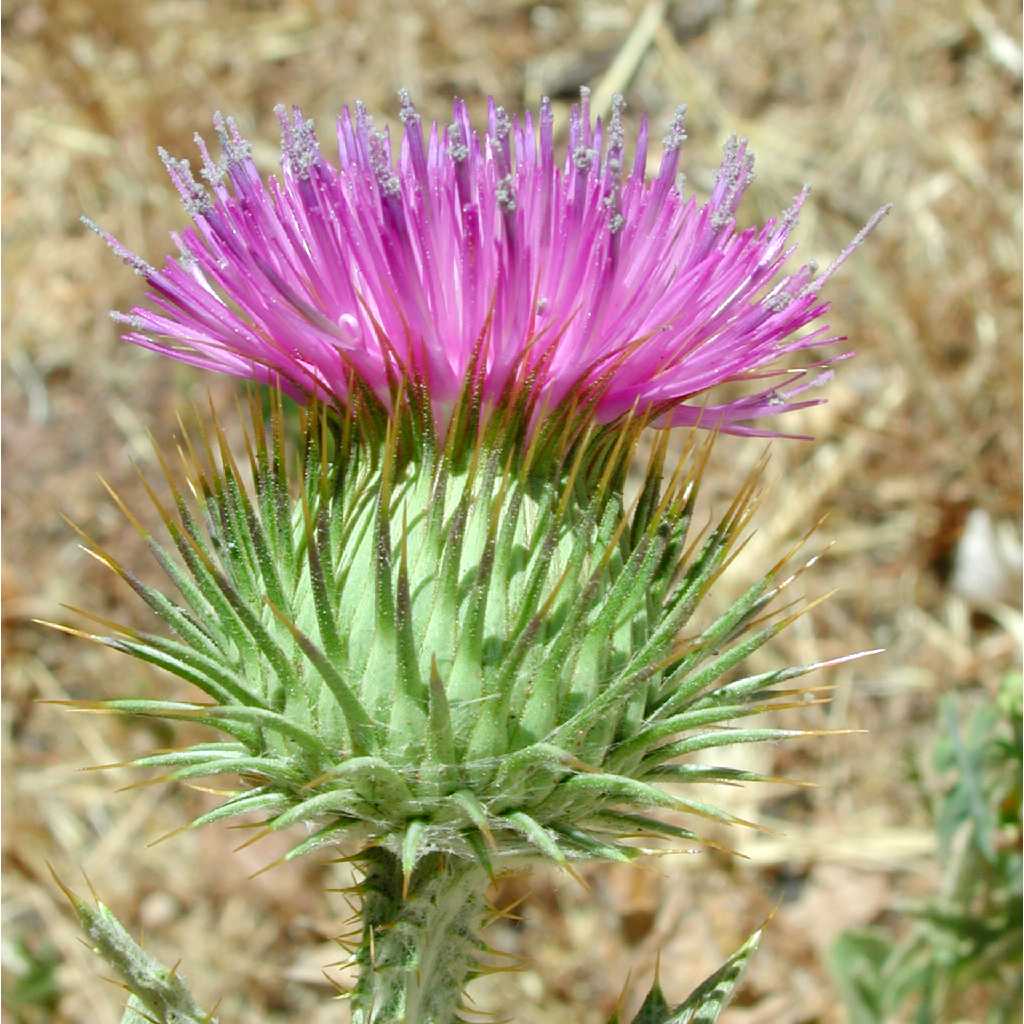
|
Family: Asteraceae |
Biennials, 50-400+ cm, coarse, prickly. Stems usually erect, ± branched, spiny-winged. Leaves basal and cauline; winged-petiolate (basal) or sessile (cauline); blade bases narrowing. margins pinnately lobed or divided and dentate, teeth and lobes tipped with stout spines. Heads discoid, borne singly or in corymbiform arrays; (peduncles 0 or spiny winged). Involucres hemispheric to ovoid or spheric. Phyllaries many in 8-10+ series. linear to ovate, entire, tapered to stiff spines, middle and outer often spreading or reflexed. Receptacles flat to convex, epaleate, not bristly, alveolate with apically fringed pits. Florets many; corollas white or purple, actinomorphic or weakly zygmorphic, tubes slender, throats cylindric or narrowly goblet-shaped. lobes linear; anther bases acute-tailed, apical appendages subulate; style branches: fused portions with minutely hairy nodes, long, cylindric, minutely papillate, distinct portions minute. Cypselae ± cylindric, 4-5-angled, usually ± transversely roughened, glabrous, attachment scars basal; pappi falling in ring, of many barbed or plumose bristles, basally connate. x = 17. Similar to Cirsium, differing chiefly in the receptacle, which is flat, fleshy, and honey-combed, often with short bristle-tips on the partitions, but not densely bristly; pappus-bristles naked or plumose; spiny biennials, mostly tomentose or woolly. 40, sw. and c. Asia. Gleason, Henry A. & Cronquist, Arthur J. 1991. Manual of vascular plants of northeastern United States and adjacent Canada. lxxv + 910 pp. ©The New York Botanical Garden. All rights reserved. Used by permission. |
This project was made possible in part by the Institute of Museum and Library Services [MG-70-19-0057-19].
Powered by Symbiota



